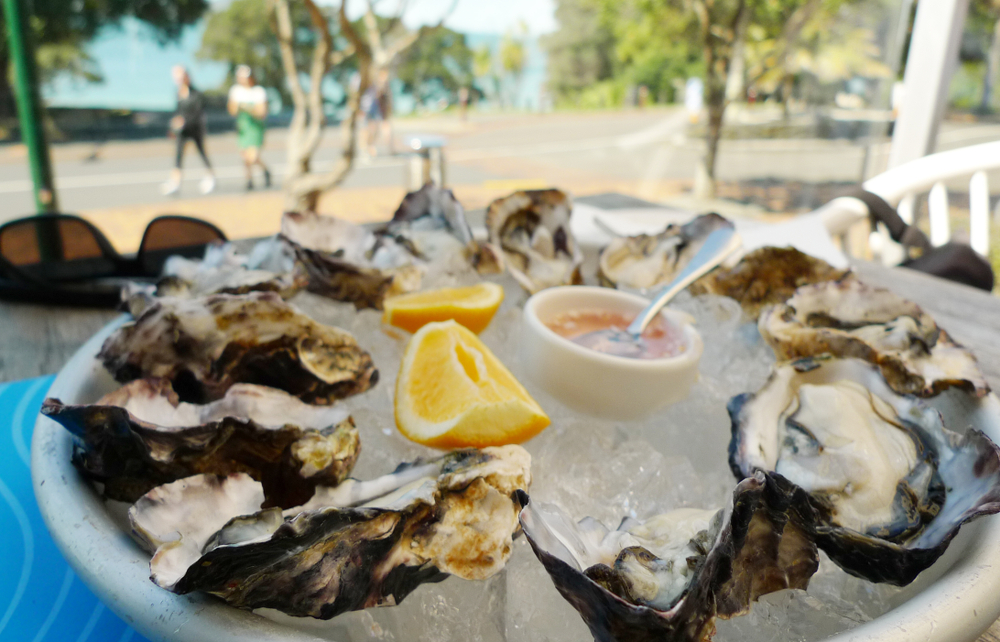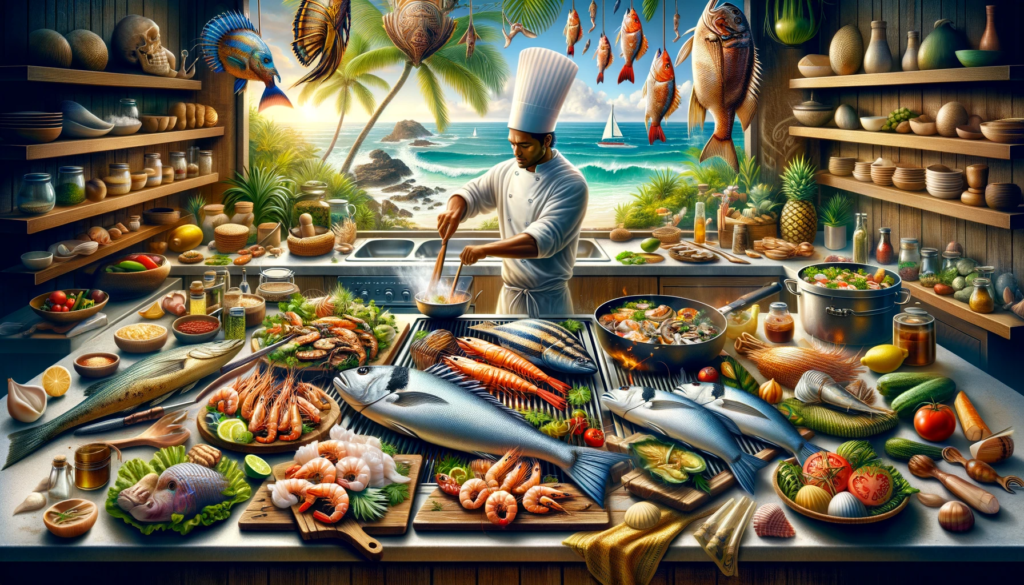Introduction to Oceanian Seafood Cuisine
The Rich Diversity of Seafood in Oceania
Oceania, a vast region encompassing Australia, New Zealand, and the tropical islands of the Pacific Ocean, offers an extraordinary range of seafood that reflects its rich marine ecosystems. The warm waters are home to various fish, crustaceans, and mollusks that have played a central role in the traditional diets and cultures across these lands. From the vibrant fish markets of Sydney to the remote fishing villages of Fiji, seafood is consumed with reverence and joy. Culinary traditions draw upon the fresh flavors of local catches like snapper, grouper, and sea urchin, celebrating the ocean’s bounty. With mindfulness towards sustainability and indigenous practices, Oceanian seafood cuisine continues to evolve while paying homage to its roots in the islander communities.
Popular Seafood Varieties in Oceania
Overview of Commonly Used Seafood in Oceanian Cooking
In Oceanian cuisine, the selection of seafood is both diverse and distinctive. Signature varieties like Tasmanian salmon, Moreton Bay bugs, and Hoki grace Oceanian tables, enjoyed for their unique flavors and textures. In addition to these, one can find an abundance of prawns, oysters, and scallops, particularly favored in Australia and New Zealand. The Pacific Islands offer treasures such as mahi-mahi, wahoo, and the esteemed South Pacific tuna, sought after for their rich, succulent taste. These staples of the Oceanian diet, adapted to suit local palates, highlight a connection between the people and their surrounding watery realms, creating a culinary narrative deeply entwined with nature’s offerings.

Traditional Oceanian Seafood Recipes
Ika Mata – Raw Fish Salad from the Cook Islands
Ika Mata, hailing from the Cook Islands, celebrates freshness and simplicity. This raw fish salad captures the essence of tropical cuisine, utilizing freshly caught fish such as yellowfin tuna or mahi-mahi. The fish is marinated in citrus juice, typically lemon or lime, which ‘cooks’ the flesh. It’s then tossed with creamy coconut milk, diced vegetables like cucumber, and a hint of chili for a gentle kick. Ika Mata is often enjoyed with a side of taro root or rice, offering a refreshing and light meal that encapsulates the vibrant spirit of Polynesian cuisine.
Fijian Kokoda – Fijian Ceviche
Kokoda, a Fijian iteration of ceviche, embodies the fusion of cultural influences in Pacific Island cuisine. Like its South American counterpart, Kokoda features raw fish, typically wahoo or snapper, cured in lemon or lime juice. The distinctive twist comes with rich coconut milk, onions, tomatoes, and a scattering of fiery chilies. This dish offers a sensory journey through its blend of textures and zesty oceanic flavors, often garnished with garden-fresh coriander. Kokoda is more than a meal; it’s a communal experience, shared among friends and family, that pays tribute to Fijian hospitality and their sea treasures.
New Zealand Green-Lipped Mussel Chowder
New Zealand is renowned for its green-lipped mussels, an indigenous species that makes a hearty and comforting chowder. This creamy soup showcases local produce, mingling plump mussels with potatoes, leeks, and sometimes sweet corn, creating a symphony of textures and flavors. Typically finished with a cream and white wine splash, the chowder forms a rich base that allows the mussels’ unique taste to shine through. Served with crusty bread or a crisp side salad, this Kiwi favorite is a culinary delight and a source of nourishment, reflecting New Zealand’s deep-rooted connection to the ocean’s resources.
Australian Barramundi with Lemon Myrtle
Australian cuisine lauds barramundi as a prized catch, with recipes often designed to enhance its delicate flavor. A classic preparation includes grilling or pan-frying the fish and pairing it with the aromatic native herb, lemon myrtle. The combination elevates the mild taste of barramundi, offering a zesty and slightly spicy note that complements the fish’s buttery texture. Commonly accompanied by a medley of roasted vegetables or a light salad, this dish is a testament to Australia’s love affair with fresh, high-quality ingredients and the reverence for native flora that has carved a place for itself in modern culinary arts.
Tahitian Poisson Cru – Marinated Raw Fish
Tahitian Poisson Cru is the quintessence of Oceanian island cuisine, where the bright vibrancy of the sea meets the rustic charm of island life. A traditional staple in Tahiti, this dish consists of ultra-fresh fish, such as tuna or mahi-mahi, cut into bite-sized pieces and marinated in lime juice. The acid from the citrus gently cooks the flesh, enhancing its silky texture. The fish is mixed with sliced vegetables—cucumbers, carrots, and bell peppers—and bathed in creamy coconut milk. The result is a harmonious blend of tangy, sweet, and savory notes, typically enjoyed with a scoop of steamed white rice or breadfruit. Poisson Cru invites diners to savor the unspoiled flavors of the ocean, embraced by the warmth of Tahitian hospitality.
Techniques for Preparing Oceanian Seafood
Grilling, Steaming, and Raw Preparation Methods
Seafood in Oceania is prepared using a variety of methods that highlight the natural flavors and textures of the marine ingredients. Grilling is a popular technique, especially for fish like barramundi or snapper, often marinated with herbs and served with a squeeze of lemon. Steaming presents another favored method, particularly for shellfish such as mussels and clams, preserving their moisture and oceanic essence. Raw preparations, like in the dishes Ika Mata and Poisson Cru, maintain the fish’s integrity and offer a refreshing taste reminiscent of the sea. These methods, deeply rooted in Oceanian cuisine, are a testament to the culinary practices that honor the delicate nature of seafood while delivering robust flavors to the palate.
Tips for Cooking Perfect Seafood Every Time
Cooking seafood to perfection requires attention to detail and respect for the ingredient’s delicate nature. Start with the freshest seafood possible, looking for bright eyes and clean, ocean-like smells for fish. For techniques like grilling or pan-frying, ensure your cooking surface is hot to obtain a crisp exterior while keeping the inside succulent. Don’t overcook—seafood generally cooks quickly, and overcooking leads to a tough, dry texture. Embrace simplicity with seasonings; a little salt, pepper, and fresh herbs or a squeeze of citrus can elevate the fish’s natural flavors. Finally, let the seafood rest briefly after cooking—it continues to cook slightly with residual heat, leading to a perfectly done dish.
Modern Takes on Traditional Oceanian Seafood Dishes
Fusion Recipes and Contemporary Variations
Today, chefs across Oceania are reimagining traditional seafood dishes with modern flair and global influences. Fusion recipes merge classic techniques with contemporary tastes, such as incorporating Asian spices into the cooking of local fish. Seafood tacos, inspired by Mexican cuisine but filled with fresh Oceanian catch and tropical salsa, represent another popular variation. Contemporary twists on recipes like fish pies or seafood stews also abound, introducing new ingredients that complement the traditional tastes. This cross-cultural culinary exchange not only revitalizes time-honored recipes but also showcases the adaptability and versatility of Oceanian seafood in the global gastronomic landscape.

Pairing Seafood with Sides and Wine
Ideal Side Dishes for Oceanian Seafood
Accompaniments to Oceanian seafood are as important as the main event, harmonizing flavors and adding textural contrast to the plates. Light and fresh sides such as couscous salad, quinoa with herbs, or roasted seasonal vegetables complement the delicate profiles of most fish dishes. More hearty options might include creamy potato gratin or sweet potato fries, which stand up well to the richness of oilier fish or chowders. Simplicity is key: the sides should not overwhelm the seafood but rather enhance its natural taste and create a balanced dining experience highlighting the best of Oceania’s ocean bounty.
Wine Pairing Recommendations for Seafood Meals
Wine pairing plays a crucial role in amplifying the enjoyment of Oceanian seafood dishes. White wines, with their crisp and refreshing profiles, are typically the go-to for many fish recipes. A zesty Sauvignon Blanc or a dry Riesling can complement the acidity in raw preparations like ceviche, while a buttery Chardonnay pairs delightfully with cream-based dishes like chowders. For more robust fish or those prepared with a charred technique, consider a light-bodied Pinot Noir that offers subtlety without overpowering the seafood. As a rule, aim to balance the wine’s flavor intensity and the dish’s seasoning to achieve a harmonious taste experience.
Sustainability and Ethical Seafood Practices in Oceania
Choosing Sustainable and Ethically Sourced Seafood
As consumers become more environmentally conscious, the demand for sustainable and ethically sourced seafood has risen. In Oceania, where seafood is a staple, supporting fisheries that practice responsible harvesting and adhere to environmental regulations is essential. Opt for seafood with eco-certifications, and be mindful of choosing species that are not overfished or harvested using destructive methods. Engaging with local fishmongers who can provide insights into the source of their seafood allows consumers to make informed choices, thus contributing to the health of marine ecosystems and the livelihoods of communities dependent on fishing.
FAQs on Cooking Oceanian Seafood
How to Determine the Freshness of Fish
Determining fish’s freshness is crucial for flavor and safety. Fresh fish should smell like the ocean, a clean and salty scent, not fishy or ammonia-like. Look for clear, bright eyes rather than dull or sunken ones. The gills should be a vibrant red, and the flesh firm to the touch, snapping back when pressed. If purchasing whole fish, the scales should be shiny and cling tightly to the skin. With fillets, check for moist, translucent flesh without discoloration or drying around the edges. These signs indicate how recently the fish has been caught and how well it has been handled since.
Optimal Cooking Durations for Various Seafood Types
Different types of seafood require varying cooking times to reach their ideal texture and flavor. Thin fish fillets might only need a few minutes per side to cook through when pan-frying or grilling. More substantial cuts, like a halibut steak or a whole fish, could take 10 minutes or more per inch of thickness. Shellfish such as shrimp and scallops cook quickly, often in under five minutes. Mussels and clams are ready once their shells open, indicating they’re thoroughly cooked. Always use a food thermometer to ensure seafood reaches the recommended internal temperature, preventing under and overcooking.
Achieving Perfect Seasoning for Seafood
Seasoning seafood ideally means enhancing its natural flavors without overwhelming them. Start with quality sea salt, using a lighter hand for delicate fish and being bolder with fattier varieties or crustaceans. Freshly ground black pepper is a classic pairing, as are fresh herbs such as dill, parsley, and cilantro. Citrus zests and juices bring out the brightness in seafood. If you prefer a little heat, paprika or a dash of cayenne pepper can add depth. Always taste as you go; remember, you can add but can’t take away, so be cautious with stronger spices and salts.
Allergen Information for Seafood
Seafood allergies are a significant concern for many individuals. Common allergens include proteins found in finned fish and shellfish, such as shrimp, crab, and lobster. It’s important for those with allergies to recognize cross-contamination risks—using separate utensils, cookware, and prep areas when handling seafood can help prevent exposure. Also, some non-seafood dishes may contain seafood extracts in sauces or marinades. If dining out, inform the staff of your allergy to ensure safe meal preparation. For mild reactions, antihistamines can mitigate symptoms, but for severe allergies, carrying an epinephrine injector is critical.
Cooking Seafood Options for Health-Conscious Individuals
For health-conscious diners, cooking seafood presents ample opportunity to create nutritious meals rich in omega-3 fatty acids and lean protein. Steaming, baking, and grilling are cooking methods that retain the inherent health benefits of seafood without adding excess fat. Use herbs, spices, and citrus to flavor dishes instead of heavy sauces or batters. Incorporating a variety of seafood into your diet—such as omega-3-rich salmon or light whitefish like tilapia—can contribute to a balanced nutritional profile. Additionally, being mindful of portion sizes helps manage calorie intake while enjoying the vast seafood available in Oceania’s culinary landscape.
